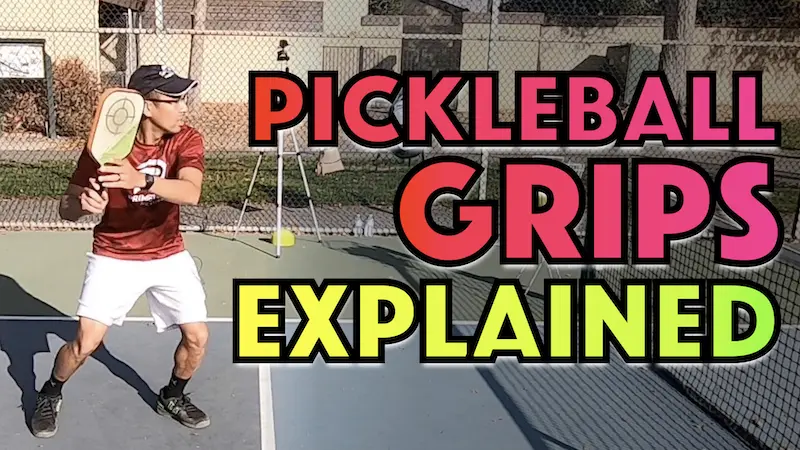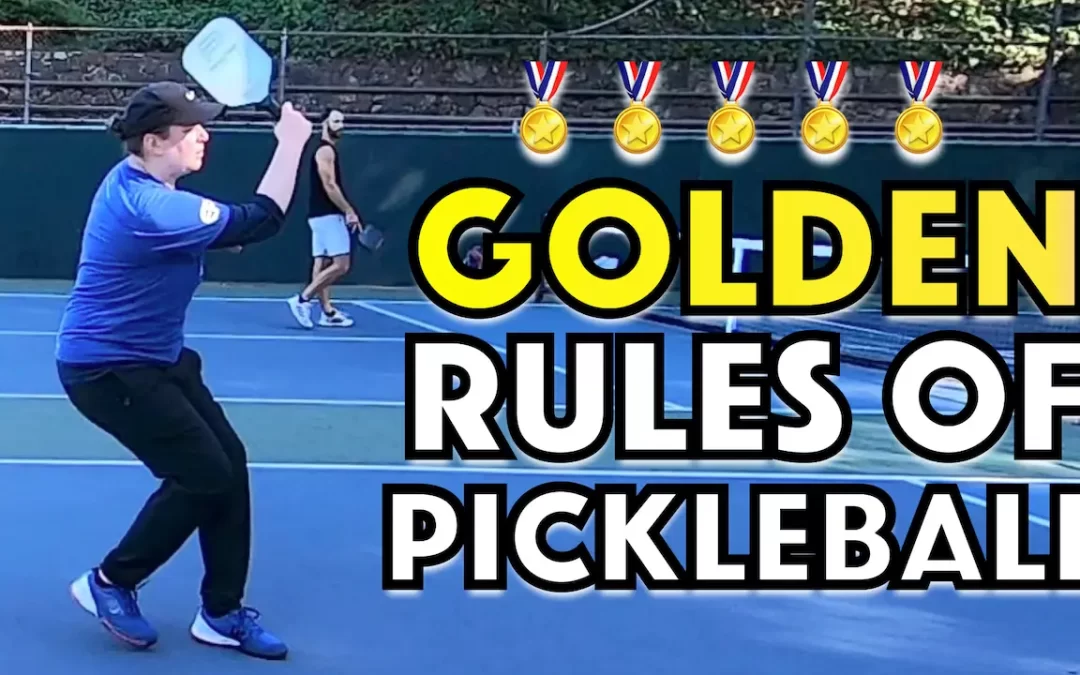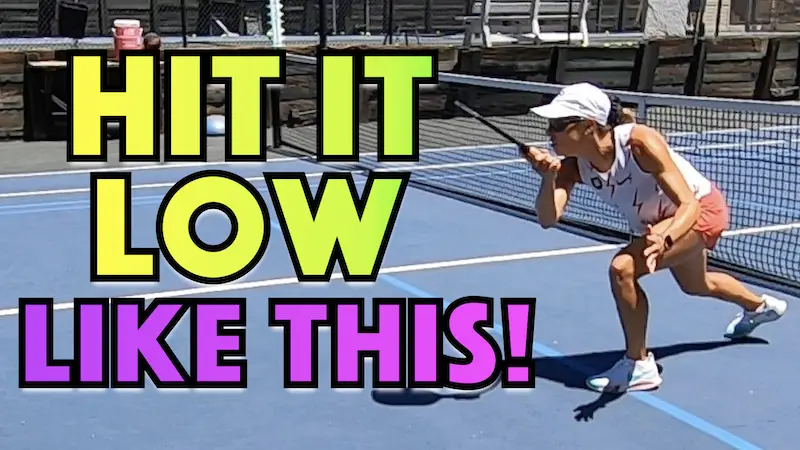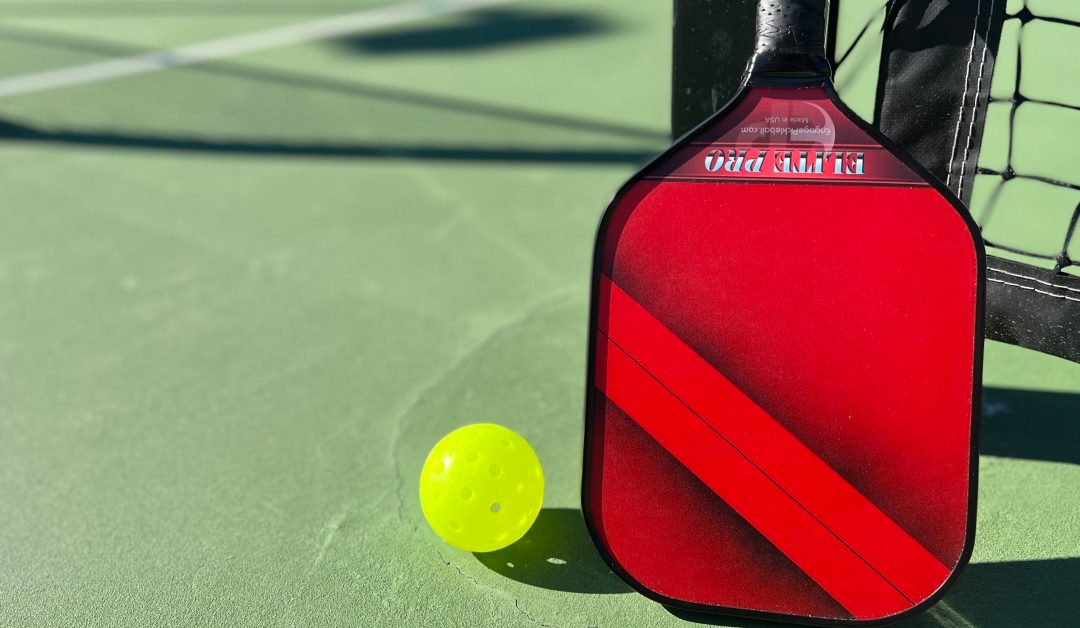Looking to improve on your pickleball serving techniques or want to know more about another type of serve in pickleball to add to your game.
The drop serve rule was introduced and implemented as a provisional rule in the pickleball rule book on January 25, 2021. After a lengthy review, the provisional rule was changed to become a permanent rule in 2022.
That means that there are now two types of pickleball serves, including the traditional serve and the drop serve, that are considered to be legal.
Are you ready to learn more and improve your serving skills?
Types Of Pickleball Serves
As of 2022, there are two official pickleball serves:
- Pickleball Volley Serve (Traditional Serve)
- Pickleball Drop Serve
Pickleball Volley Serve (Traditional Serve)
This is the more traditional pickleball serve between the two and a good starting point for a beginner pickleball player. If you can master this type of serve it is beneficial to you as it allows for a higher contact point than the drop serve. You can hit a more aggressive serve with a higher contact but keep reading as this is not the only consideration when deciding which type or serve is best for you.
In order to perform a pickleball volley serve you are required to either toss the ball or drop it before hitting the pickleball with your paddle.
The ball must not drop or bounce against the court before you hit it to be considered a traditional serve.
In other words, as you drop the ball you must make contact with the ball via your paddle before it is able to hit the ground.
You can toss the ball up in the air and let it drop before you hit it or you can hold it out and let it drop down out of your hand. Either technique is permissible.
Pickleball Drop Serve
As of 2022, there is now a legal, additional service option added to the picklelball serving rules: the drop serve.
This pickleball serve was initially created for server’s that were having a hard time hitting the ball when tossed directly out of their hand. The main feature of this new serve is that you are allowed to let the ball bounce off the court before hitting it. This creates some extra time that allows players some extra time to organize themselves to hit the ball. Some players find that they are able to time their contact much more easily with a drop serve.
In order to perform this serve, the pickleball must be dropped or released from any height that is considered to be natural. All this mean is that you can hold your arm out as high or as low as you want and you can drop it from that point. We recommend going higher rather than lower. The higher the point from which you drop it, the higher it will bounce.
Once the pickleball has bounced off the court you are required to hit the ball.
When opting to hit the pickleball drop serve, there are no other restrictions that will apply. This is due to the fact that the ball won’t bounce higher than the server’s navel, provided that all the rules are followed when performing this type of serve.
Therefore, having an upward motion in the arm when serving, never hitting above the navel, or keeping the paddle tip below the wrist when making contact with the ball do not apply, as they do on the traditional serve. We’ll cover more on these rules shortly.
A key point on the drop serve is that you cannot push or propel the ball up or down to get a higher bounce and you may not add spin to the drop ball.
Furthermore, you are not required to stick with on serve for the entire game. You may alternate as you wish between a drop serve and a volley serve.
Pickleball Serving Basic Rules
As mentioned above, there are two types of serves in pickleball and there are three basic pickleball serving rules when it comes to the traditional serve that largely don’t apply to the drop serve.
Other key rules as far as the serve goes in pickleball are as follows
- Each pickleball game or rally is initiated with a serve.
- The game can be played in singles or doubles format, although doubles is more popular. The serving rules for both are largely the same. Essentially, the only difference is that in singles you don’t have to account for a second server as you do when you’re a team in doubles.
- The first serve is always hit by the player on the right side of the court when playing singles or doubles.
- The serve must be hit with an underhand motion (more details below)
To better your service game, keep in mind that at first, its a good idea to simply get the serve in. Once you get comfortable with your consistency you can begin to add more power to your serve to put more pressure on your opponents.
The Underhand Serve
Unlike tennis that allows for an overhand service motion, pickleball is initiated with an underhand serve. This rule was established to encourage longer points and limit winners of the serve (aces).
The Official Rule book serve rules stipulate that the ball must be hit below the navel at the point of contact.
Furthermore, when the ball makes contact with the pickleball paddle, there are some specific conditions that need to be met according to the International Federation of Pickleball Official Rule book:
- The highest point of the pickleball paddle head must be below the highest part of your wrist. In other words, the part where your wrist joint bends.
- Contact with the pickleball should not be made above the wrist.
- Contact with the pickleball should not be made above the waist level.
- During this serve, your arm should move in an upward arc or alternatively, in an upward motion unless it is a drop serve. One main benefit of a drop serve is an upward arc is not necessary.
- You may hit the ball with a forehand motion or a backhand motion. Generally the forehand is preferred.
Serving Cross-Court
The server must hit the pickleball over the pickleball net and diagonally into the cross-court service box.
An important note about the game of pickleball is that the ball may touch the net as there is no service lets in this game, provided that the pickleball clears both the non-volley zone and the non-volley line and still lands in the correct diagonal service court.
This is because the non-volley zone line is considered to be part of the non-volley zone. It’s considered a fault if the ball touches any part of the non-volley zone line.
Another key point is that only one serve attempt is permitted. This is similar to ping pong and in contrast to tennis where two service attempts are allowed.
In the event that the pickleball lands in either the non-volley zone (also known as the kitchen) or on the non-volley line, the server has committed what is known as a fault.
Placement Of Your Feet
On a pickleball serve, at the point of contact of the pickleball paddle with the pickleball, at least one of the server’s feet must be flat on the ground and remain behind the baseline.
In addition, as per the International Federation of Pickleball – Official Tournament Rulebook, when the server’s paddle makes contact with the pickleball during the serve, neither of the server’s feet may come into contact with the area outside of the imaginary extension lines of either the sideline or the centerline.
Should the server’s feet come into contact with the area outside of the imaginary extension lines of the sideline or the area outside of the imaginary extension of the centerline at anytime before contact with the ball, then that would constitute a fault and the point ends in the returner’s favor.
This is known as a service foot fault.
In a singles game, in a singles game, the right to serve would now transfer to the opponent. In the case of a doubles game, the server’s partner would be next in line to serve.
However, in the event that the second server committed a service fault or a service foot fault, it would constitute a side-out. The opposite team would the get to serve then.
Scoring Points & Announcing The Score
Only the serving team can earn points during a rally. The primary way that will happen is when the receiving team commits a faults. The receiving team can only “earn the right to serve” and only once they have done that can they begin to score points.
In doubles, when the serving team wins an exchange, the two team members on the serving team then switch sides from left to right and right to left to begin the next point. The same server will continue to serve as long as their team continues to win the point while they are serving.
Before the serve is given to the opposing team, each member on the serving team must get an opportunity to serve.
Once both team member’s have had their opportunity to serve and they commit a fault during a point that the second server on their team initiated, a side out occurs. A side out is when the serving team loses its service and the other team will now serve. A side out usually happens many times during the course of the game
The score is announced by the individual who serves. The score should be called out by the server immediately preceding every point
The score is announced as follows:
In a game of doubles, the score consists of three numbers. The first number is the score of the serving team. The second number is the score of the receiving team. And the third number is the server’s number which is either one or two.
In a singles game, only the score of the server and the score of the receiver is called out by the server.
The entire score must be read out before the ball can be hit.
Another key point about the entire score being called out, don’t change tempo on calling out the entire score, especially if you are tempted to hit the ball fast and hard at your opponent. This is a courtesy to all players involved. Also, it can mess up your serving rhythm and cause you to miss.
The Double Bounce Rule
The receiving team must let the ball bounce before returning it, after which the serving team must also allow the ball to bounce before hitting it. This rule is called the double bounce rule and is unique to pickleball.
Much like the reasoning for the use of an underhand serve, it is designed to prolong the point since it prevents the serving team from crashing the net after they serve.
After the ball has bounced in each court, either team may volley the ball or they may play off the bounce of the ball.
7 Pickleball Serving Tips
The following serving tips apply to the pickleball volley serve and drop serve respectively.
Volley Serving Tips
1. If you want to make a more difficult shot for your opponent to strike, try adding spin to the ball when you toss it as this will increase the spin when you make contact with the paddle.
2. A server has 10 seconds to make contact with the ball after the score is called out. If you have a bad toss, do not hit the ball. Rather pick it up and try again.
3. Accuracy and depth is far more important than power.
4. Practice makes perfect. Ge out there and get to work so that you can rely on your serve.
5. Most advanced players tend to use the traditional serve because they can get a higher contact point than with a drop serve. The higher contact allows them to drive the ball more straight as opposed to a drop serve contact that will require them to hit more upwards.
Drop Serving Tips
5. The feet placement rules apply to the drop serve technique. Familiarize yourself with these rules as discussed above but the ball CAN bounce within the court and need not be behind the line as your feet do.
6. The great benefit of the drop serve is that although you sacrifice a higher contact, it does allow you use a high to low motion. Thanks to this feature you can apply heavy slice to a drop serve which might be a nice thing to mix in and add variety to your serve so as to keep your opponent off guard.
Final Thoughts
There are two serves in pickleball: the volley serve (traditional serve) and the drop serve.
The rules are fairly similar for pickleball singles and doubles with the exception that doubles serve has to accoutn for two servers on a side rather than just one.
Feet placement is crucial and so is serving technique when it comes to serving. Provided that your feet are behind the line, the ball lands in the correct service court and clears the non-volley zone and the no volley zone line you will not commit a fault.
Pickleball is a social and fun sport. It can also get quite competitive which is great for those who enjoy that as well. The game always starts with the serve so knowing how to successfully initiate the point with a strong and legal serve is key to getting the game rolling in the right direction. Now you are in the know an don your way to a great game. Enjoy!






